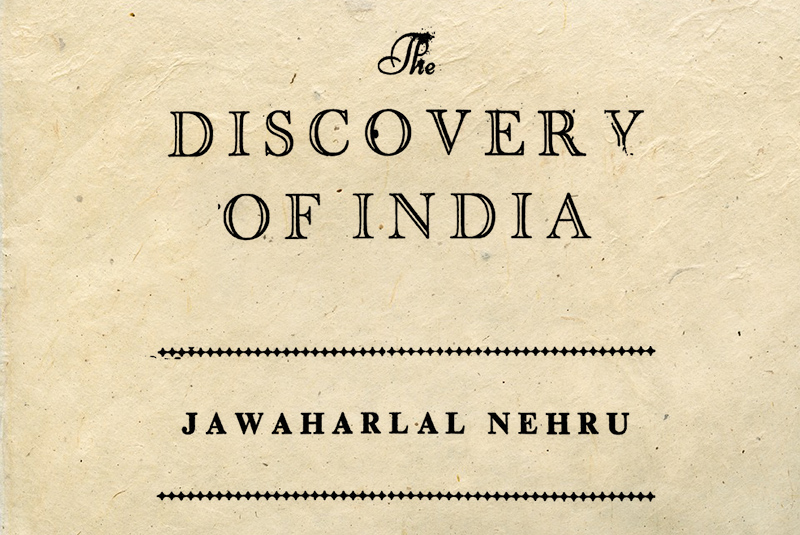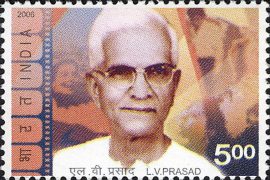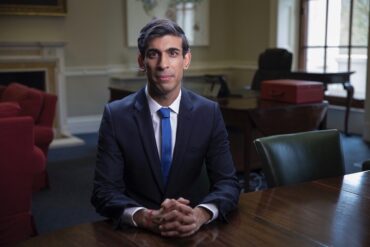Jawaharlal Nehru made the most of his time in prison. For three years – from 9 August 1942 to 28 March 1945 – the British imprisoned him and eleven other members of the Indian National Congress in the Ahmadnagar Fort Prison Camp after they passed the Quit India Resolution.
The prison was not a pleasant place. However, it offered Nehru a much sought after luxury — ‘leisure for thought and writing.’ Taking advantage of this, he started working on a book about ‘various aspects of Indian history and culture.’ Writing in longhand, he finished the manuscript in five months – between April and September 1944.
His companions in jail – particularly Maulana Abul Kalam, Govind Ballabh Pant, Narendra Deva, and M Asaf Ali – graciously read the manuscript and offered their suggestions. Nehru found them to be invaluable and incorporated them into his revisions.
After his release, the manuscript was typed. However, he was unable to read the typed script as he plunged back into politics. His daughter, Indira, ill with mumps in Allahabad, corrected the proofs, and the first edition of the book titled The Discovery of India was published in 1946 by The Signet Press, Calcutta.
The Discovery of India is a compendium of remarkable essays that take the reader on a journey through time; it’s a rendition of India’s history and culture, an expedition that unravels the origins of Indian civilisation and narrates the drama as it unfolds through the ages. Writing with poetic elegance and romantic flair, Nehru presents a panoramic picture of India’s past and encapsulates its rich heritage. Read, for example, this passage about India:
About her there is the elusive quality of a legend long ago; some enchantment seems to have held her mind. She is a myth and an idea, a dream and a vision, and yet very real and present and pervasive. There are terrifying glimpses of dark corridors which lead back to primaeval night, but also the fullness and warmth of the day about her. Shameful and repellent she is occasionally, perverse and obstinate, sometimes even a little hysteric, this lady with a past. But she is very lovable, and none of her children can forget her wherever they go or whatever strange fate befalls them.
The breadth and range of topics covered in the book are astounding – from history, religion, philosophy, art, theatre, and Indian mathematics to questions on national identity, imperialism, and internationalism. In the first few chapters, he writes about Hinduism, the Vedas, the Upanishads, the Mahabharata and the Bhagavad Gita as well as the idea of Materialism, the Mahavira, the Buddha and Ashoka.
Yet, thankfully, Nehru’s narrative is not an account that solely glorifies the past; it does not turn a blind to the horrors of history. Instead, it envisages history as a living process, opens up a mirror for self-reflection, and attempts to view the past in relation to the present. His interpretation of India connects the dots and looks at the country, not as a narrow, regressive, parochial entity, but as an ever-evolving mosaic, a colourful collage, that is all-embracing and accommodative.
In doing so, it raises important questions about faith, identity and dogma – and presents an in-depth analysis, a nuanced argument, that is persuasive and meticulously referenced. Writing about India’s incredible diversity and unity, he asks questions that resonate even today. In an essay titled “Hinduism,” he argues that it is “entirely misleading to refer to Indian culture as Hindu culture,” as various other faiths such as Buddhism, Jainism, Sikhism, Islam, and Christianity have had their imprints on India through the ages. Equally, he argues that “a Christian or a Moslem could, and often did, adapt himself to the Indian way of life and culture, and yet remained in faith an orthodox Christian or Moslem. He had Indianized himself and become an Indian without changing his religion.”
Nehru’s idea of India, as presented in The Discovery of India, could cause an allergic reaction to some who view India through a narrow prism of majoritarianism. However, it is a necessary antidote, essential reading, that could pull them out of their ignorance, enhance their understanding, and help them understand how India has always been an inclusive, multi-cultural society.
In his essays, at times, one may feel that Nehru may have selectively taken extracts and quotations in praise of old Indian literature and philosophy. But the reader may not be far off from concluding so. Nehru, in his footnotes, admits to ‘succumbing’ to that temptation. Such references to old Indian texts and historical figures could, at times, make it difficult for the uninitiated Western reader to comprehend the full picture. In a letter to Nehru, the noted scientist Albert Einstein says:
I have read with extreme interest your marvellous book The Discovery Of India. The first half of it is not easy reading for a Westerner. But it gives an understanding of the glorious intellectual and spiritual tradition of your great country.
The Discovery of India is not just a treatise on Indian history. A considerable part of the book presents an “analysis of the vicious exploitation of the Indian people” and “the tragic influence and forced economic, moral and intellectual decline by the British rule.” At times, it also turns into an outpouring, a critique of Britain’s callous policies towards India. In an essay titled ‘Famine,’ he wrote:
Famine came, ghastly, staggering, horrible, beyond words. In Malabar, in Bijapur, in Orissa, and, above all, in the rich and fertile province of Bengal, men, women and little children died in their thousands for lack of food. They dropped dead before the palaces of Calcutta, their corpses lay in the mud-huts of Bengal’s innumerable villages and covered the roads and fields in its rural areas….here death had no purpose, no logic, no necessity; it was the result of man’s incompetence and callousness, man-made, a slow creeping thing of horror with nothing to redeem it, life merging and fading into death, with death looking out of the shrunken eyes and withered frame while life still lingered for a while…but a million had died, or two millions, or three; no one knows how many starved to death or died of disease during those months of horror…Yet rich England, and richer America, paid little heed to the hunger… Money was not needed it was said, and ships to carry food were scarce owing to war-time requirements”
Yet, Nehru’s discourse is not jingoistic and vengeful. Instead, it asks questions that help us reflect on the state of modern Indian democracy. Read, for instance, his observations and questions about the General Elections:
Often enough, elections bring out the evil side of man, and it was obvious that they did not always lead to the success of better man. Sensitive persons, and those who were not prepared to adopt rough-and-ready methods to push themselves forward, were at a disadvantage and preferred to avoid these contests. Was democracy then to be a close preserve of those possessing thick skins and loud voices and accommodating consciences?
Today, decades after its publication, Nehru’s treatise remains more relevant than ever. It reads like a charm, delights the reader with the many wonders of India. The Discovery of India is an inquiry into India’s heart and soul – a must-read for everyone who seeks to understand the essence of India.
-30-
Copyright©Madras Courier, All Rights Reserved. You may share using our article tools. Please don't cut articles from madrascourier.com and redistribute by email, post to the web, mobile phone or social media.Please send in your feed back and comments to editor@madrascourier.com











